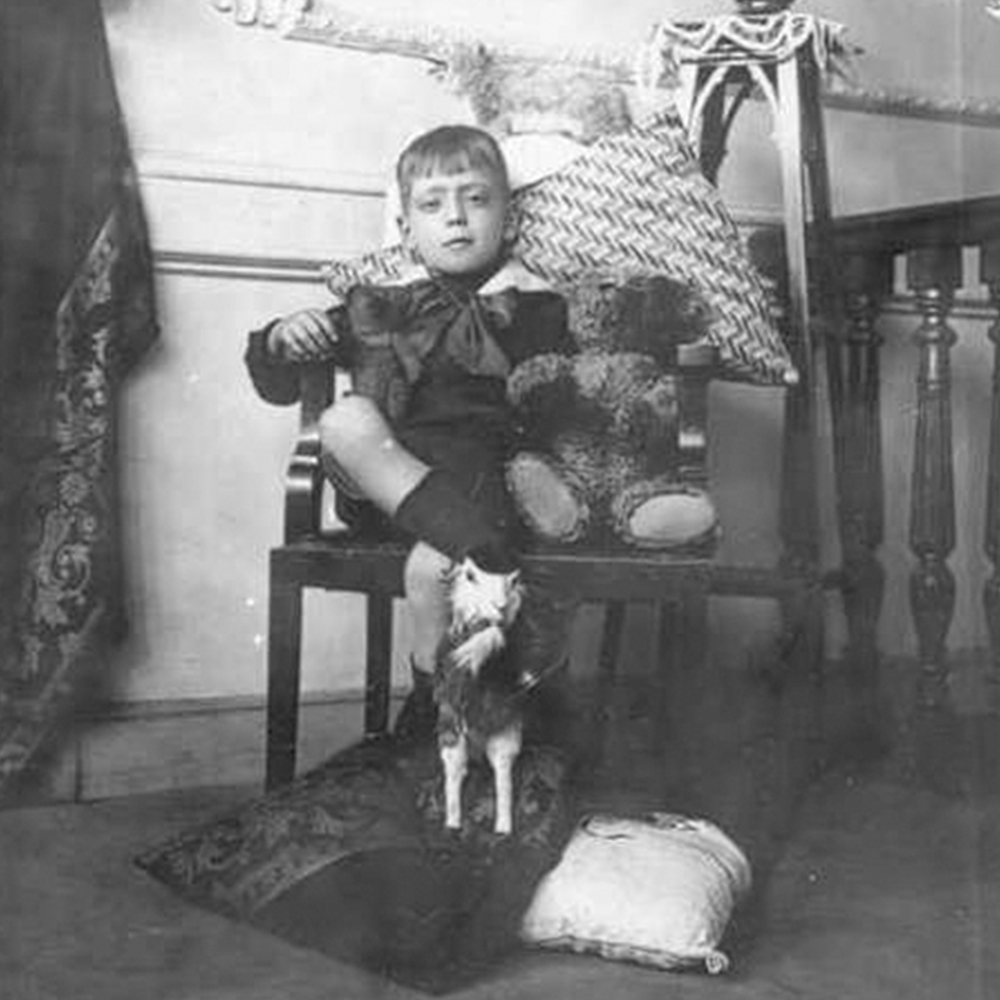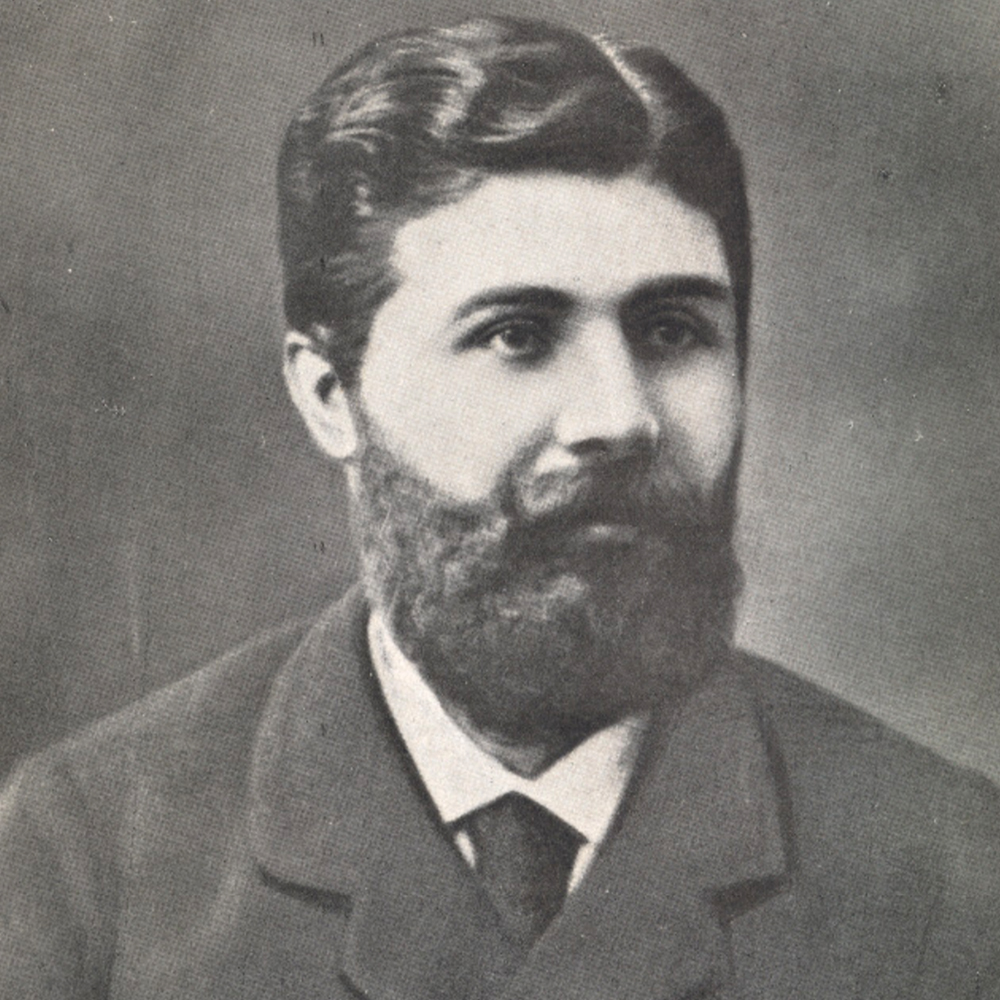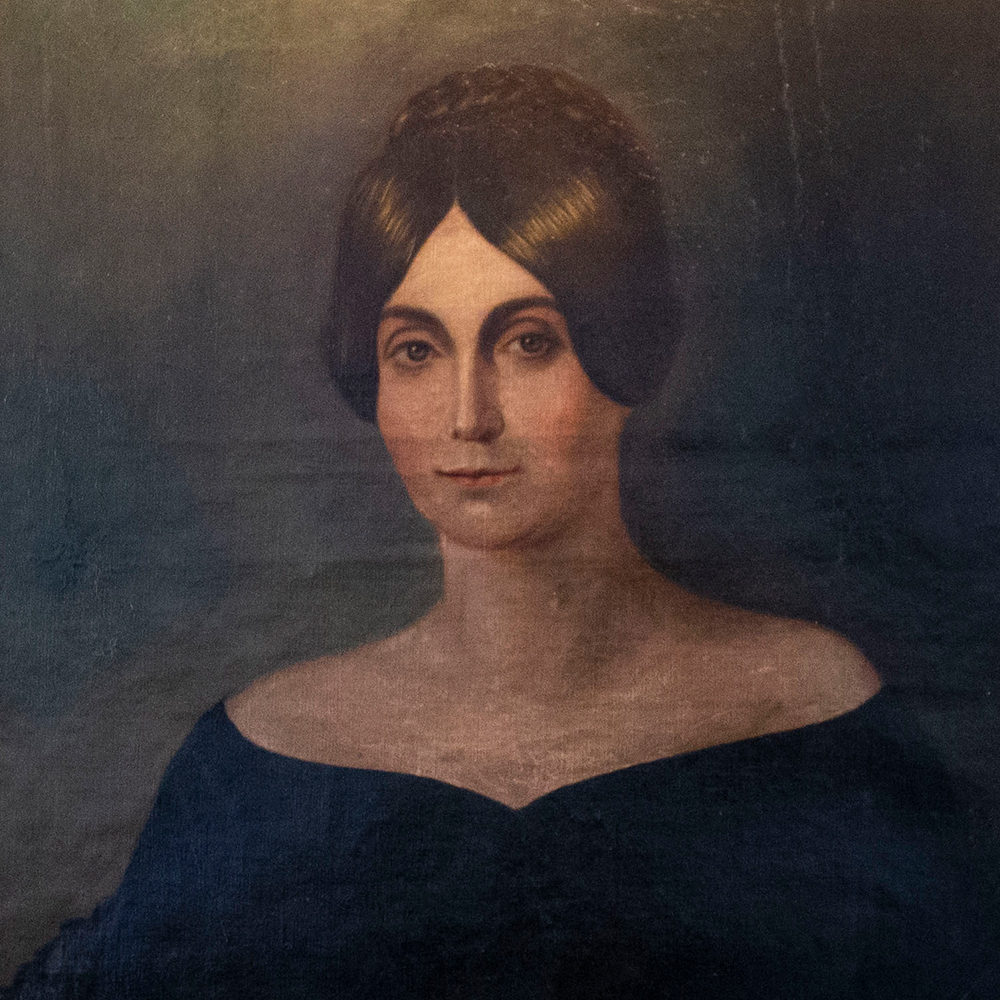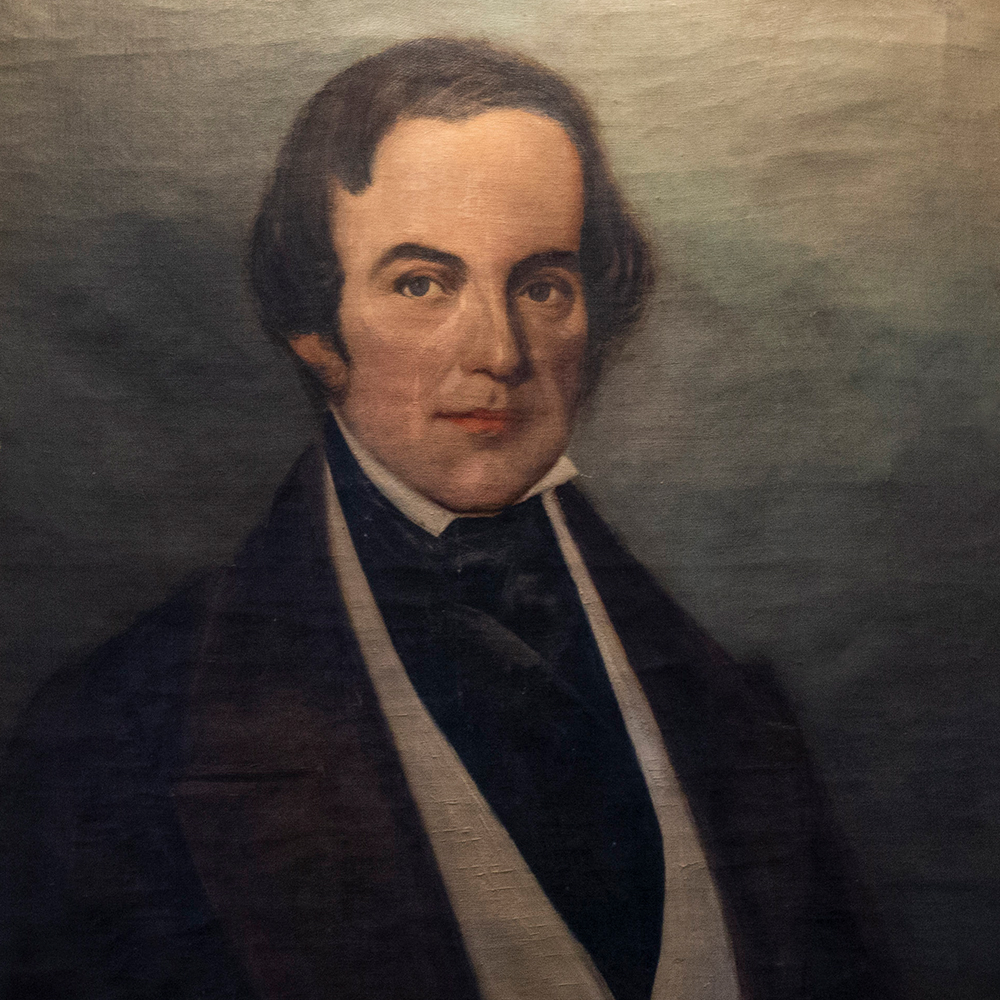Universidad Técnica Federico Santa María
Inicio » University » Federico Santa María
Philanthropist, visionary and entrepreneur
In the mid-19th century, Valparaíso was undoubtedly the country’s main port city. In the bay you could see dozens of ships arriving or ready to sail to and from the main ports of the world. The hectic activity at the pier, located in what is now the Plaza Sotomayor, denoted its projection as an important commercial center and outlined it as a prosperous and cosmopolitan city. The growing commercial traffic also stimulated the arrival of capital and, as a result, immigrants from different latitudes, captivated by the commercial opportunities. Its inhabitants could perceive how the city was progressively embellished with new buildings and more refined architectural designs, thanks to the cultural influences brought by the numerous migrants who arrived to the port.
On August 15th, 1845, Federico Santa María Carrera was born in the old El Cabo street, today Esmeralda, where the elite of Valparaiso was concentrated. The birth, as was the custom of that time, was in his father’s house, becoming the sixth child among nine siblings, of the prosperous and daring businessman Juan Antonio Santa Maria, descendant of a noble family of peninsular origin with a strong colonial landowning influence, and of the distinguished Magdalena Carrera Aguirre, belonging to one of the most prominent and patriotic clans in the emancipation process of our nation. His paternal grandfather, Juan Antonio Carrera Salinas, was a first cousin of the national hero José Miguel Carrera Verdugo, from whom he inherited his ideals, present in his life, work and legacy, which he clearly expressed in his will at the end of his life.
His early childhood was marked by the canons imposed by belonging to an elite family of the Valparaiso society of the time. At the age of seven or eight, he entered the Shóeller Institute, receiving a demanding and disciplined education based on the universal principles of man, a vision also shared by his parents. In this way, values such as respect, strictness and adherence to the truth, fundamental bastions of social life at that time, were instilled in him. His maternal grandfather and his great aunt, Javiera Carrera Verdugo, also contributed to forge his liberal thinking and his love for free expression and for the homeland.
On December 15th, 1850, a voracious fire completely destroyed the Santa Maria Carrera home. As a result of this incident, which devastated a large number of buildings on El Cabo Street, the community of Valparaiso organized itself and on June 30th, 1851 formed the Valparaiso Fire Department, the first in the country. It was financed by merchants, among whom Juan Antonio Santa María must undoubtedly have been one of them.
In 1859, when he was only 14 years old, he started working for a shipping company; however, soon after his father’s death, his impetus and his family’s imprint impelled him to become independent. In 1871, he acquired a simple motorboat to load and unload merchandise on the ships at the port, for which he had the unconditional support of his mother, who, after being widowed and remarried, continued to be a fundamental pillar for him. This is recorded as a life anecdote, where he relates that she pawned a ring to raise the necessary money to support her son in his first venture.
Five years later, after the naval bombardment of Valparaíso by the Spanish Navy, he decided to take the risk of a new business venture in the Tarapaca area, at that time Peruvian territory, a center of development and the set of booming mining, commercial and shipping activities derived from the rich deposits of copper and saltpeter. Although his stay was brief, he was able to integrate and interact with prosperous businessmen, with whom he would meet again at other times in his life.
In 1867, as a result of some bad business dealings that left him on the verge of bankruptcy, he decided to return to his hometown, but without feeling discouraged. Based on his tenacity, vision and his contacts with the financial world, from where he obtained the necessary funds, he made the leap to big business, which became a reality with the acquisition of shares in countless companies. Two years later, he joined forces with his brother-in-law Jorge Ross Edwards to buy the Quebrada Verde farm, forming the Compañia de Consumidores de Agua de Valparaíso (Valparaiso Consumers’ Water Company) and that same year, together with other partners, he created the Compañia de Diques de Valparaíso (Dock Company of Valparaíso). Only one year later, he embarked with other shareholders and founded the Compañia Nacional de Remolcadores (National Tugboat Company). During this period, by means of a loan, he invested in the railroad industry and in the first shares of the Compañía Nacional de Vapores (National Steamship Company), the predecessor of the Compañia Sudamericana de Vapores, created in 1872. At the same time, he becomes the owner of a number of properties in the flourishing port city.
Devoted to his deep-rooted patriotic spirit, he did not hesitate to leave his business aside and join the army to participate in the War of the Pacific that Chile was fighting against Peru and Bolivia due to conflicts over the saltpeter deposits in the north of the country. Thus, in 1879, at the age of 34, he was posted in the barracks of the Artillery Hill, being appointed commander of the Civic Battalion Nº 1 of Valparaiso, with the rank of lieutenant colonel in charge of 800 men. However, an illness prevented him from taking part in the combat and he decided to embark for Europe, which did not prevent him from showing his commitment to his country, inherited from his illustrious ancestors. His trip began in 1880 and although it was for health reasons, he did not waste the opportunity to immerse himself in the European commercial and financial environment, concentrating his activities on the Paris, London and Brussels stock exchanges. However, after a series of ill-advised business ventures and almost ruined, he decided to return to Chile at the end of 1884.
Back in the country, ready to make a comeback, he resumed his commercial activities with impetus, but this time participating more actively in national politics This is how the Civil War of 1891 found him and, although he did not take an active part in the conflict, he supported the liberal cause of the congressmen against the side of the President José Manuel Balmaceda, experiencing a mishap that almost cost him his life when he was mistaken for a Balmacedaist by a triumphant faction, which almost executed him if it had not been for a neighbor of the city who testified his position in the matter.
During this same period, he developed several commercial activities in different areas of the country. Testimony to this are the shares in the mining railroad companies in the north and in gas companies in San Felipe and Concepcion. As expected, his restless spirit, audacity and permanent desire to undertake, added to the experience acquired over the years, lead him to make the decision to realize his most cherished dream: a trip around the world.
In 1894, he began his adventure seeking to discover new countries, realities and cultures, revealing before his eyes such millenary civilizations as India, China and Japan, as well as being dazzled by the progress shown by Australia, New Zealand, the United States and Canada. Mexico, Cuba, the Antilles, Barbados, Jamaica and Venezuela were also part of his journey, which ended when he returned to Europe in 1897, full of experiences and energy to start a new cycle in his life.
That year, he settled in Paris and began a sentimental relationship with Anna Gillaud, a young French woman whom he had met on his previous trip and whom he hired first as his assistant. Someone he himself would later call in his will “the partner of my life”, who would accompany him years later on his trip to Chile, already as his wife, according to the publications of the time. Together with her, he enjoys music and opera, a passion he has cultivated since his youthful years in the port city. Now, he can enjoy the best of the world’s repertoire, becoming a regular at the Paris Opera House.
In 1898 he invested in the sugar business, becoming known not only in financial circles but also in political circles, due to the conflicts he had with the French State, which escalated to the French Congress where an investigation was initiated for alleged speculation, which finally showed that all his actions were in accordance with the law. It is in this context that Santa María managed to make his greatest fortune – not without difficulties – after a series of risky bets in which he invested large sums of money, as was his custom, which finally paid off as a result of a methodical work of market and business research that earned him the nickname of “The Sugar King”.
In 1906, after the earthquake that devastated Valparaíso, he decided to return to Chile to help rebuild his beloved port city, but disappointed with the political class and their way of dealing with the disaster, he decided to return to Europe to dedicate himself to his business, becoming a strategist in large commercial affairs, which allowed him to increase his wealth.
Once back in Paris, and with the First World War, the few Chilean residents that still remained in the country -among them Santa Maria- organized themselves and as a sign of gratitude to the French people for the help given in the Chilean Independence process, they founded the French-Chilean Hospital, whose objective was to take in war-wounded soldiers, counting on the best specialists available, among them none other than Madame Marie Curie. Around the same time, and loyal to his altruistic spirit, he decided to donate his land Quebrada Verde to the Junta de Beneficencia de Valparaíso (Charity Board of Valparaiso).
Santa María, a tireless and cosmopolitan traveler in his vision of the world but a patriot in his feelings, marked in the same way as his great uncle José Miguel Carrera by patriotism and altruism: liberal in his concern for the cultural and educational development of the country opened his mind in his travels around the world, confronting diverse realities very distant from his own, soaking in ideals, values and humanist conscience. With an austere life and without great comforts despite the fortune he possessed and that would have allowed him to live in great luxury, he had something else in mind, leaving his manifesto expressed in his will conceived five years before his death, a cold Sunday, December 20th, 1925 in Paris, product of a pneumonia that afflicted him for a long time.

Federico Santa Maria Carrera, during childhood

Federico Santa Maria Carrera, during adulthood

Doña Magdalena Carrera Aguirre, mother of Federico Santa Maria

Don Juan Antonio Santa Maria, father of Federico Santa Maria